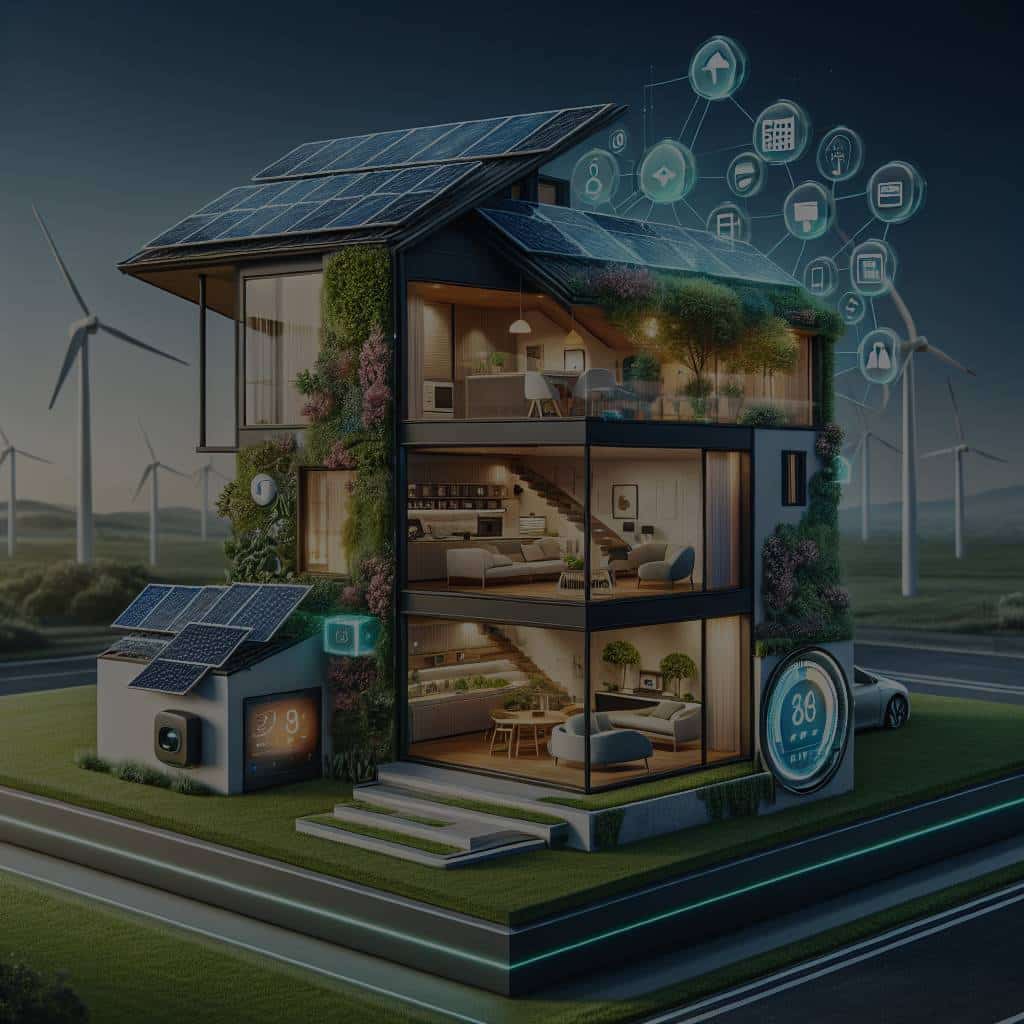How to Create an Energy-Efficient Home with Smart Technology?

As homeowners, you’re likely always on the lookout for ways to make your homes more sustainable and energy-efficient. Not only does this save money on electricity bills, but it also significantly decreases your carbon footprint. Increasingly, you are turning to smart technology to accomplish this task. This article will guide you through the process of creating an energy-efficient home using the latest in smart home technology.
Exploring the Basics of Smart Home Technology
Before we dive into the specifics of creating an energy-efficient home, it’s essential to understand the principle behind smart home technology. The term ‘smart home’ refers to a living space that’s equipped with devices and appliances that can be controlled remotely via an internet connection. These devices can include thermostats, lighting systems, and even kitchen appliances.
Also to read : What Is the Role of Wearable Tech in Preventing Occupational Injuries?
Over the years, smart home technology has evolved, with manufacturers increasingly focusing on creating devices that promote energy efficiency. These gadgets are not only convenient but also contribute significantly to reducing energy wastage, thus promoting a greener, more sustainable lifestyle.
Investing in Smart Thermostats
One of the most effective ways of creating an energy-efficient home is by installing a smart thermostat. Unlike conventional thermostats, these devices learn from your behaviors, allowing you to control the temperature of your house remotely, and even adjust the settings based on the weather.
Also to see : How Are AI Algorithms Improving Prediction of Severe Weather Events?
Smart thermostats are equipped with advanced features like learning capabilities, geo-fencing, and voice control. Such features allow for more accurate temperature settings, reducing the energy wastage that often results from heating or cooling unoccupied spaces. Integrating a smart thermostat into your home automation system can result in substantial energy savings in the long run.
Opting for Smart Lighting
Another key area to consider when looking to create an energy-efficient home is your lighting system. Traditional incandescent light bulbs consume a large amount of electricity and have a relatively short lifespan. On the other hand, LED bulbs, especially smart ones, are more energy-efficient and have a longer life span.
Smart bulbs go a step further by offering features like remote access, scheduling, and even motion detection. You can program them to turn off automatically when you leave a room or a certain time of day. This way, you’re not wasting energy lighting rooms that aren’t in use.
Implementing Energy-Efficient Appliances
While smart thermostats and lighting are significant, energy-efficient appliances also play a crucial role in creating an energy-efficient home. When shopping for appliances, look for ones that are Energy Star certified. This certification means the appliance is built to operate efficiently, saving you energy and money in the long run.
Smart appliances also come with features that allow you to monitor and control your energy usage. Some refrigerators, for instance, have vacation modes that use less energy while you’re away. Other appliances like washing machines and dishwashers can be programmed to operate at times when power rates are lower.
Incorporating Solar Energy
Lastly, consider integrating solar power into your smart home setup. Solar panels convert sunlight into electricity, reducing reliance on the grid, and in turn, your energy bills. Moreover, if your solar system generates more electricity than you use, the excess power can be fed back into the grid, helping to offset your electricity costs further.
Apart from solar panels, there are solar-powered appliances and devices available in the market today. These include solar-powered air conditioners, water heaters, and even chargers for your devices.
Creating a home that is not only smart but also energy-efficient may seem like a daunting task. However, with the right information and approach, it is entirely achievable. The benefits, in terms of cost savings and environmental impact, make it worth the investment. With the ongoing advancements in technology, the potential for creating energy-efficient homes is only set to increase.
Smart Home Energy Monitoring Systems
One indispensable tool for creating an energy-efficient home is a smart home energy monitoring system. These systems provide real-time feedback on energy usage in your home, helping you identify power-hungry appliances and patterns of use that may be contributing to high energy bills.
Energy monitoring systems come in various forms, from simple plug-in devices that monitor the energy usage of a single appliance to sophisticated whole-house systems that track energy use on a room-by-room basis. These systems work by measuring the electricity flow and displaying the data in an easy-to-understand format on a mobile app or online dashboard.
Smart energy monitoring systems offer a range of features depending on the model. Some units display your home’s electricity usage in real time, allowing you to see how much energy you’re using at any given moment. Other systems can break down your energy use by appliance or by room, showing you exactly where your energy dollars are going.
Furthermore, these systems often offer historical data analysis, showing your energy usage patterns over time. This can be especially helpful for identifying trends or changes in your energy usage, such as an increase in energy use during certain times of day or seasons of the year.
Finally, some smart energy monitoring systems offer the ability to set energy usage goals and alerts to help you stay on track. For example, you could set a goal to reduce your energy usage by 10 percent over the next month. The system would then alert you if you’re on pace to exceed that goal, allowing you to adjust your usage accordingly.
Smart Power Strips
Another smart technology that can significantly enhance energy efficiency in your home is a smart power strip. Traditional power strips continue to use energy even when the connected devices are turned off. This phenomenon, known as vampire power or standby power, contributes to unnecessary energy wastage.
Smart power strips, on the other hand, reduce this energy loss by automatically turning off power to devices that are not in use. These power strips have outlets that are controlled by a master device. When the master device is turned off, the strip automatically cuts power to the controlled outlets, thus eliminating standby power.
In addition, smart power strips usually come with a few always-on outlets for devices that need power continuously, like modems or routers. This feature ensures that you can save energy without disrupting the functioning of essential devices.
Some smart power strips also come with surge protection, protecting your devices from power surges that can cause damage. Moreover, some models can be controlled remotely via a mobile app, which allows you to monitor and control the power usage of connected devices even when you’re not home.
Conclusion
Creating an energy-efficient home with smart technology is not just about saving money on utility bills—it’s about creating a sustainable lifestyle that decreases your carbon footprint. From smart thermostats and lighting to energy-efficient appliances, solar energy, smart home energy monitoring systems, and smart power strips, numerous smart technologies can make your home more energy-efficient.
The key is to start small and gradually integrate more advanced technologies as you become more comfortable with their operation. Remember, effective energy management is not a one-time event but a continuous process. As technology continues to evolve, new opportunities to enhance your home’s energy efficiency will undoubtedly emerge. By staying informed and taking advantage of these advancements, you can make a significant contribution to a more sustainable future.
